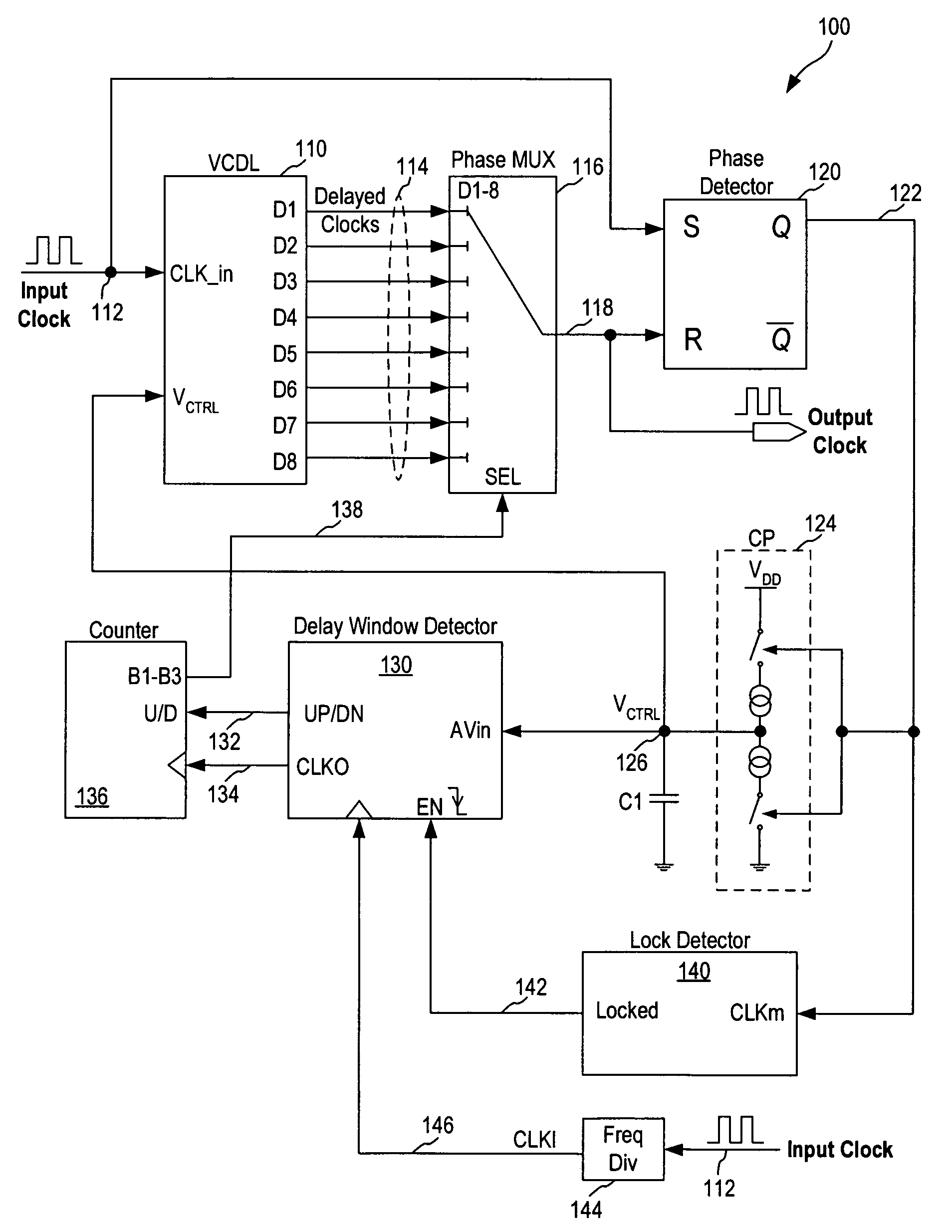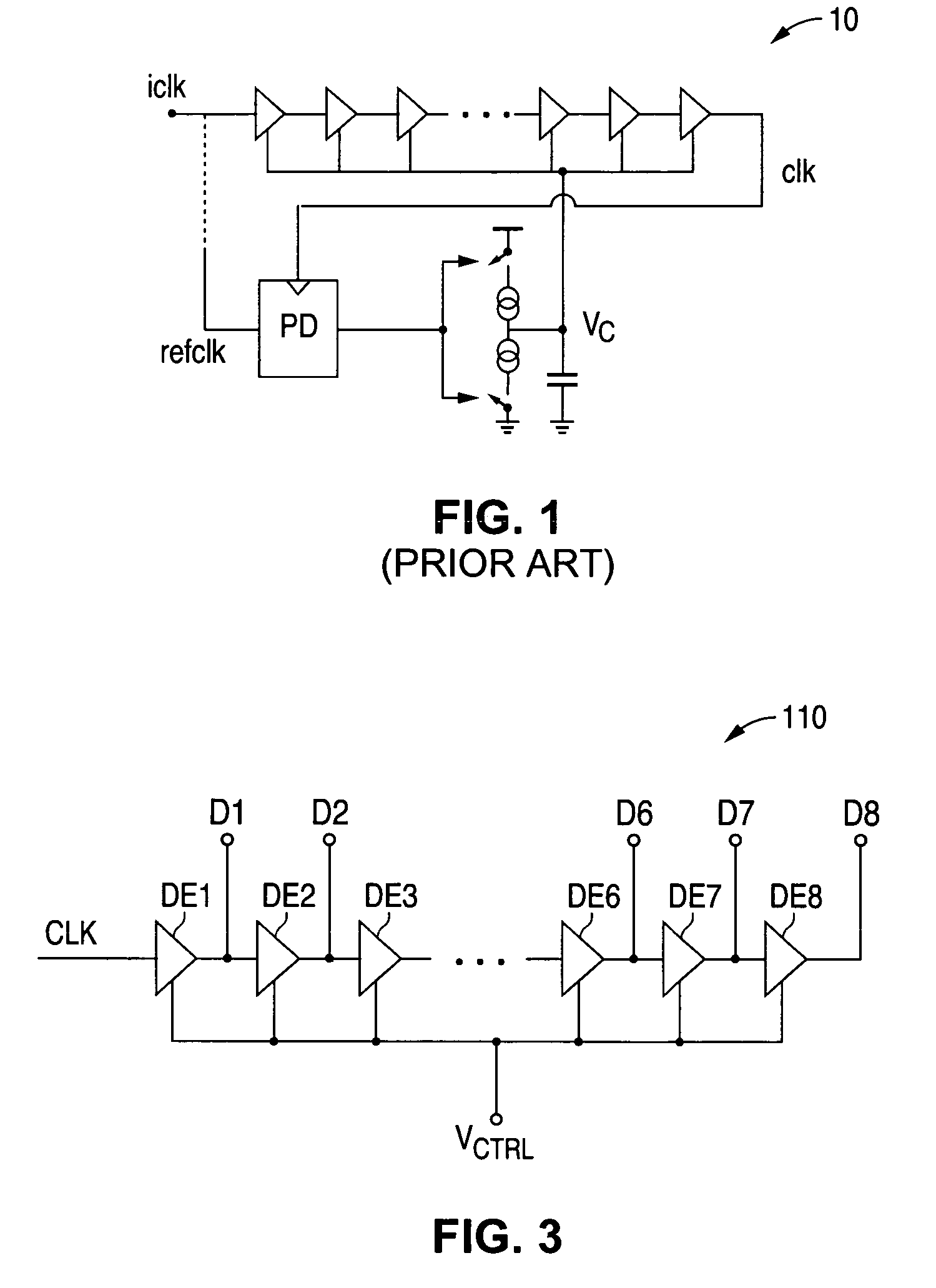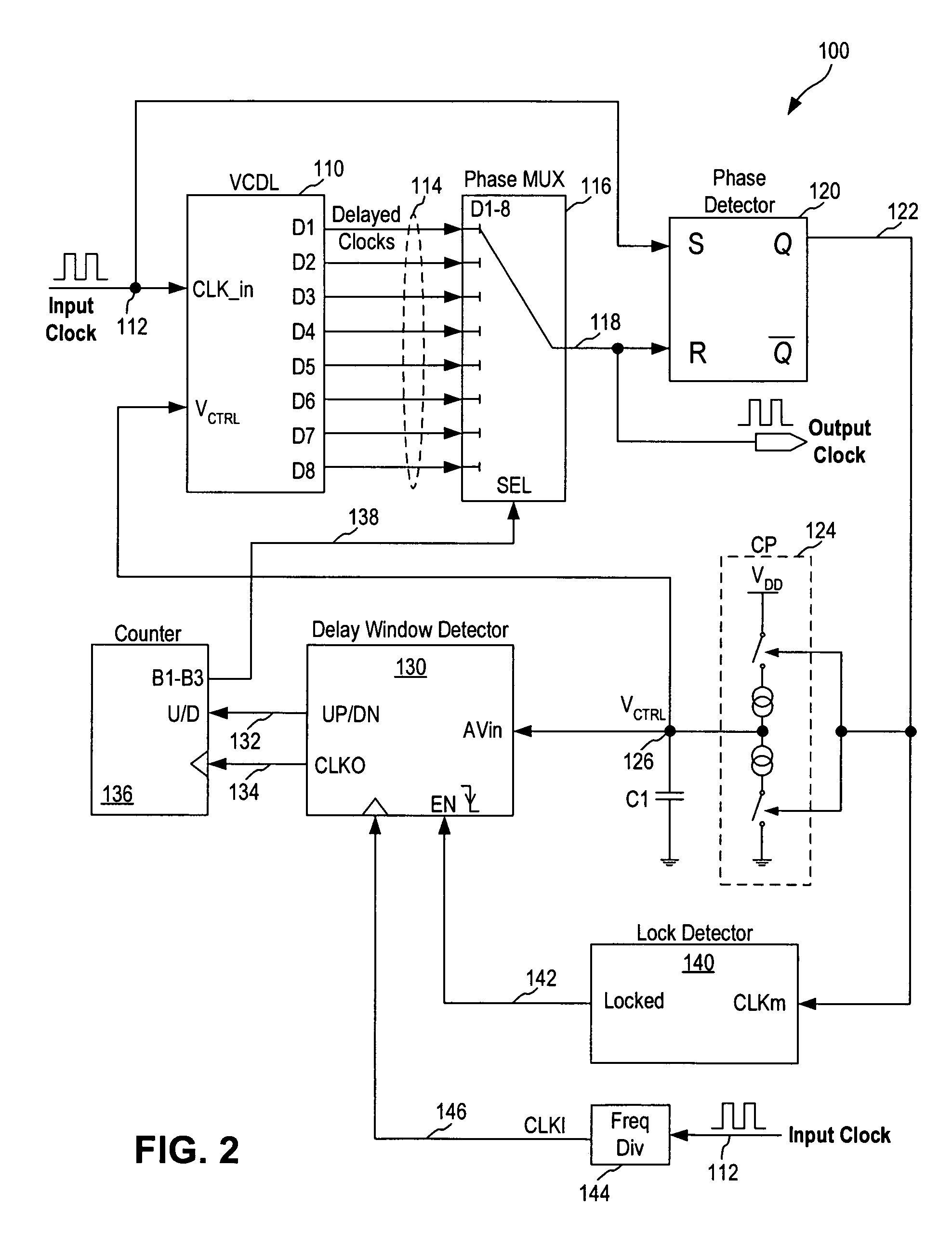Adaptive frequency variable delay-locked loop
a frequency variable and delay-locked loop technology, applied in the field of delay-locked loops, can solve the problems of narrow frequency locking or tracking range of dll, and limiting the overall frequency range of conventional delay-locked loops
- Summary
- Abstract
- Description
- Claims
- Application Information
AI Technical Summary
Benefits of technology
Problems solved by technology
Method used
Image
Examples
Embodiment Construction
[0022]In accordance with the principles of the present invention, a delay-locked loop (DLL) includes a voltage controlled delay line (VCDL) receiving an input clock signal and generating multiple clock phases as a set of delayed clock signals and a clock phase multiplexer selecting one of the delayed clock signals as the output clock signal for the DLL. The DLL includes a phase selection control loop to select one of the delayed clock signals based on the amount of delay required and a phase detection control loop to adjust the phase error within the selected clock phase so as to lock the delay of the selected delayed clock signal to the input clock signal. By incorporating the phase selection control loop and the phase detection control loop in the DLL, the DLL of the present invention can achieve a wide frequency locking range while providing excellent jitter performance.
[0023]In one embodiment, the phase detection control loop generates a control voltage for the VCDL for adjustin...
PUM
 Login to View More
Login to View More Abstract
Description
Claims
Application Information
 Login to View More
Login to View More - R&D
- Intellectual Property
- Life Sciences
- Materials
- Tech Scout
- Unparalleled Data Quality
- Higher Quality Content
- 60% Fewer Hallucinations
Browse by: Latest US Patents, China's latest patents, Technical Efficacy Thesaurus, Application Domain, Technology Topic, Popular Technical Reports.
© 2025 PatSnap. All rights reserved.Legal|Privacy policy|Modern Slavery Act Transparency Statement|Sitemap|About US| Contact US: help@patsnap.com



